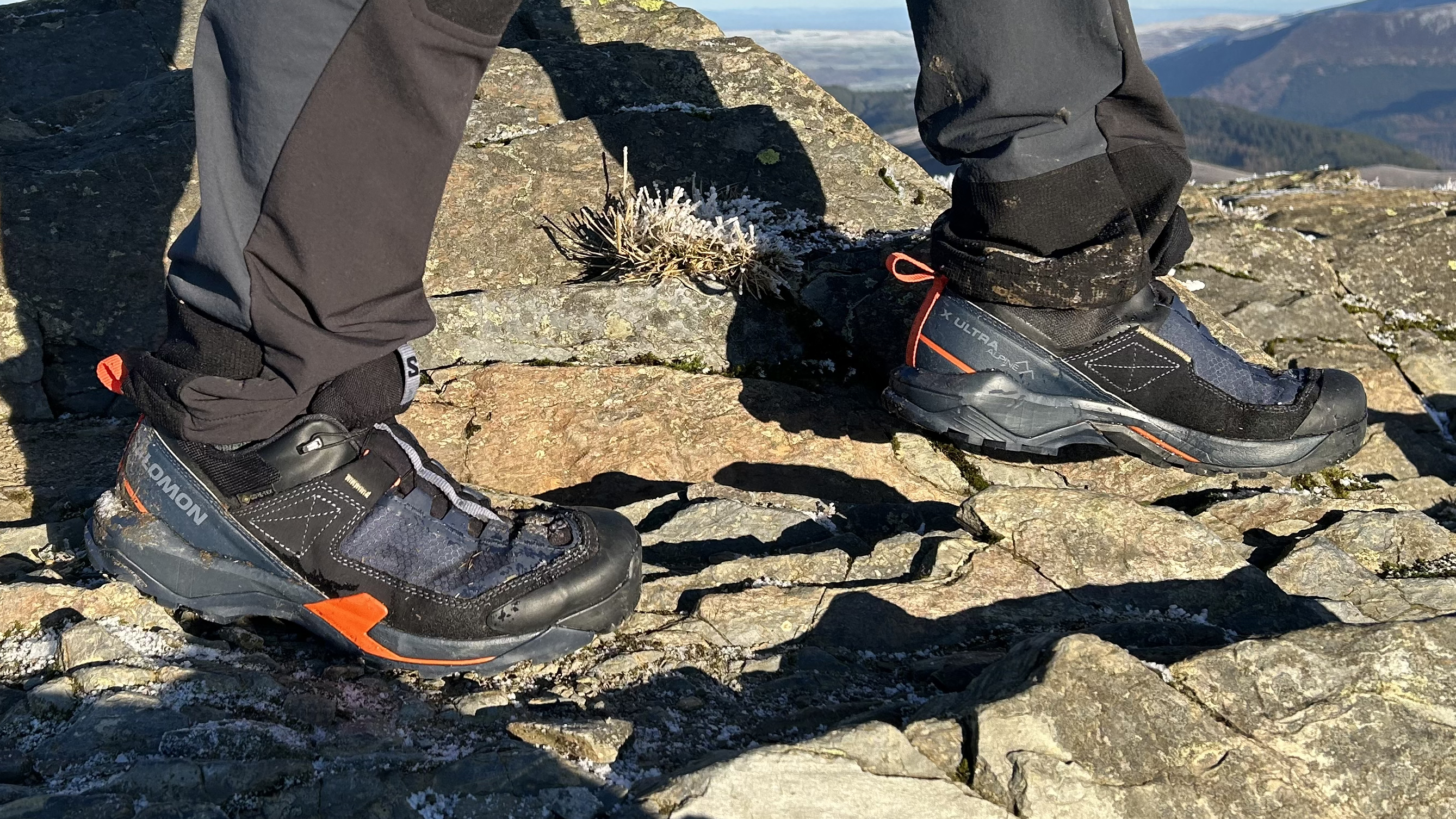
Salomon was born in Annecy, 1947, just a snowball’s throw from Mont Blanc in the French Alps. Perhaps unsurprisingly, the first products it created and sold were ski edges and the mountains have always played a huge role in the brand’s story. Founded by François Salomon, the brand rose to prominence on the global stage thanks to the drive and leadership of François’ son, Georges Salomon. Today, it’s owned by Amer Sports, the Finnish conglomerate that also lists Arc’teryx among its brands.
These days, Salomon creates gear for runners, hikers, skiers and snowboarders, specializing in kit aimed towards mountain exploration at speed, rather than slower-paced pursuits. The brand struck gold with once-in-a-generation endurance athlete Kilian Jornet, who it sponsored between 2003 and 2022, raising the brand’s profile and its association with fast-paced mountain pursuits across the world.
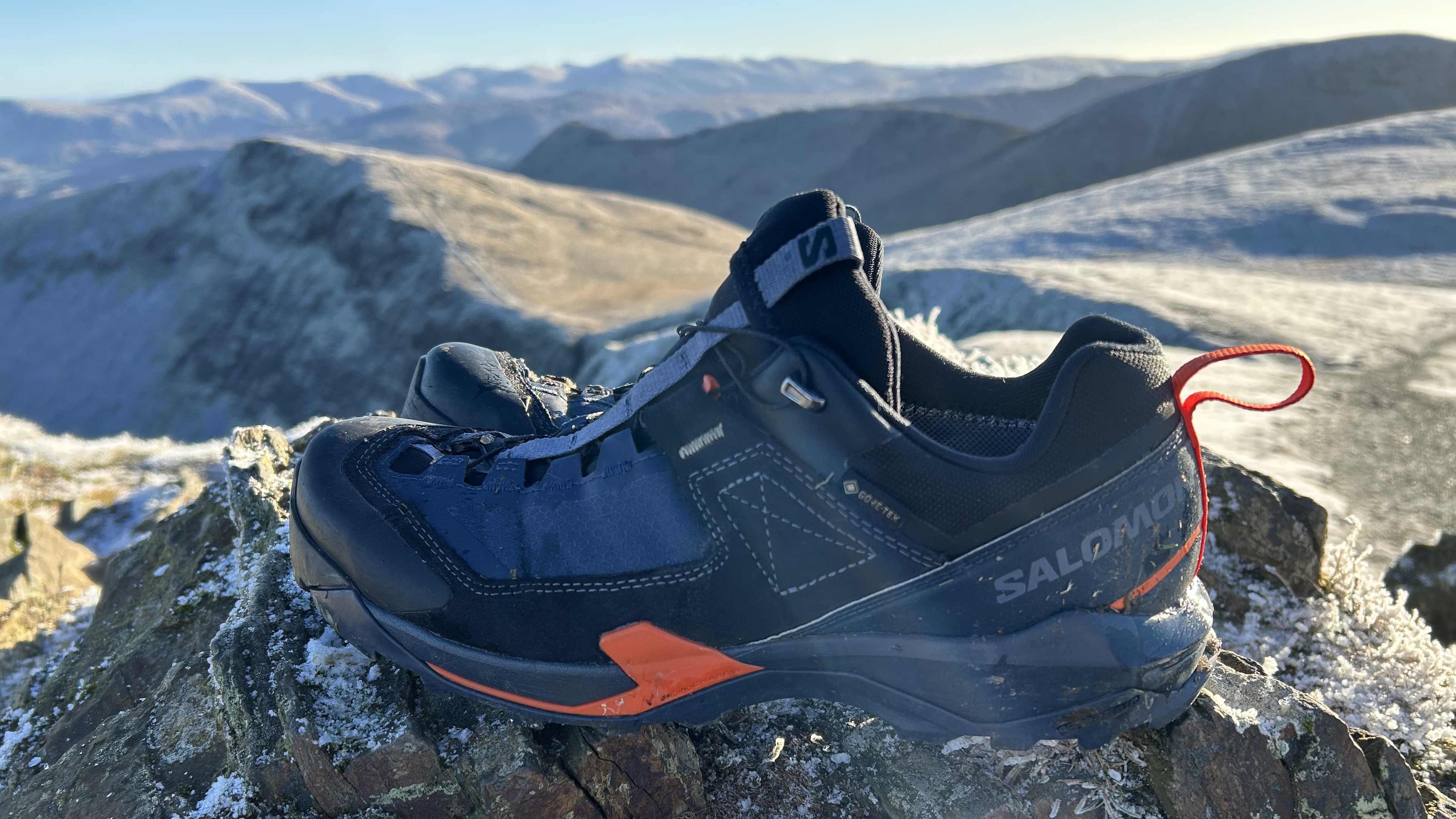
Salomon’s X Ultra hiking shoes bridge the gap between its trail running shoes and its hiking shoes – footwear tailored towards a more contemplative pace. Sharing many features with its running brethren, such as the patented Quicklace system and proprietary Contagrip rubber, Salomon’s hikers have a solid reputation in the trekking world. Of the X Ultra fleet, the Alpine version is the toughest and the priciest – a sleek yet protective, mountain-conquering cross between a standard hiker and an approach shoe.
The wonderful people at Trekitt, UK outdoor gear specialists, supplied me with the goods and I was lucky enough to put them through their paces in some of the UK's more mountainous national parks.
First impressions

List price: $200 (US) / £180 (UK)
Weight (per shoe): 420g / 14.8 oz
Materials: Contagrip rubber outsole, EVA midsole, Nubuck leather and synthetic upper, Gore-Tex waterproof membrane
Colors: Sponge / Black / Red Orange ; Blue Nights / Back / Red Orange
Versions: Men’s and Women’s versions available, also with mid-cut version for both
Best for: Hiking, scrambling, via ferrata, hut-to-hut trekking
There are plenty of times that I’ve opened up a box of hiking shoes and been greeted by a pair that closer resembles casual trainers than footwear fit for the fells, hills and mountains. This is certainly not the case with the X Ultra Alpine. Its rigid outsole and muscular reinforcements around the heel and toes have more in common with a winter mountaineering boot than a trail running shoe. If it wasn’t already apparent from the Alpine in the name – the is a shoe that means business.
However, this isn’t a mountaineering boot, and Salomon also stop short of calling it an approach shoe too, despite having many features in common with one. So, what is it exactly? Salomon developed the X Ultra Alpine to deliver in ‘all aspects of alpine adventuring, from mountain scrambling to high-stakes hiking’, in other words, this is a hiking shoe that should be in its element on the rocky stuff, but should also provide better stability, comfort and grip in sludgy mud and on the trails than the average approach shoe does.
It's undoubtedly an attractive piece of footwear, looking like the secret love child of the Speedcross 6 and La Sportiva’s Trango Tower GTX. I previously enjoyed testing the X Ultra 04, a very capable, lightweight hiker. With the 04, I found that the fit wasn’t quite right for my foot; my heel wasn’t as locked-in as I’d have liked. I was interested to see if this would also be the case in the much burlier Alpine version.
Meet the reviewer
Alpine features
Perhaps the most striking element of the X Ultra Alpine is its hybrid outsole, with its two distinctly different lug patterns. The first occupies the area around the heel and outside foot, featuring the kind of standard mug-gripping lugs you often see in hiking footwear. The other runs in an arc from the midfoot, around the instep to the toes and features rounded lugs clearly designed for grip on rock when scrambling. The space between the four lugs around the toes and instep is mostly filled in, creating a flat ‘climbing zone’ style area. This feature, seen universally in approach shoes, provides maximum traction on the rocky stuff, particularly when edging, a climbing term for stepping on a small hold and using the rubber of your shoe for grip.
Salomon uses its own Contagrip rubber to get the job done, rather than using third party rubber like Vibram. The compound, which Salomon say it’s its "stickiest ever", is designed for ironclad hold on alpine terrain and is durable too.
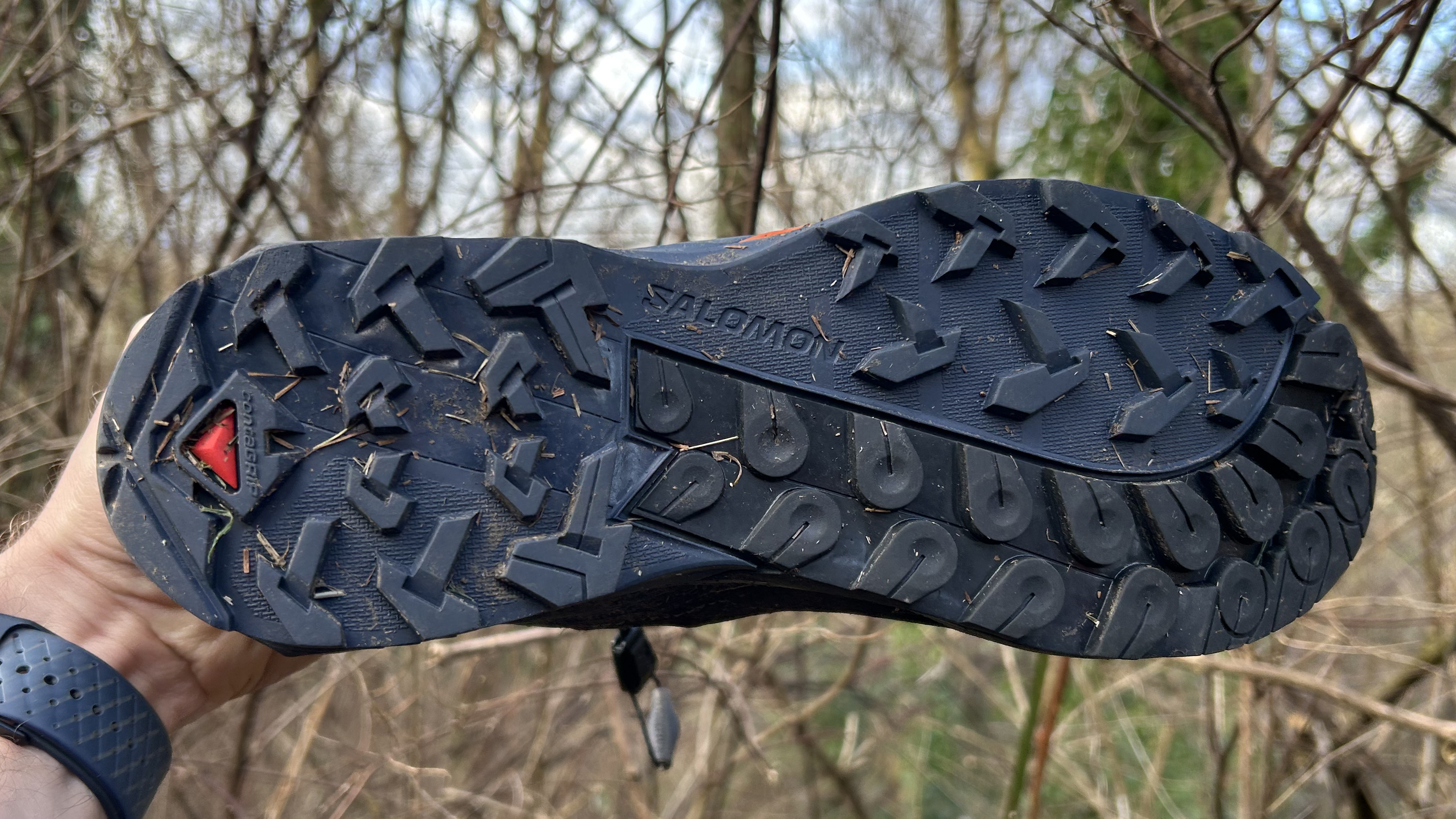
The sole curves up at the toes, providing a solid shield at the front of the shoe along with a protective rand. Meanwhile the heel is guarded by a bulky region of reinforcement that puts me in mind of a bumper car. This makes the X Ultra Alpine one of the most protective hiking shoes I’ve ever worn, underlining its suitability for technical, rocky terrain.
Moving up through the shoe, we come to the EnergyCell midsole, boasting an EVA foam designed to absorb some of the shock from each stride. Lateral stability combined with forefoot flexibility are achieved using Salomon’s Edging Chassis. This also, as its name suggests, provides high performance and precision when edging.
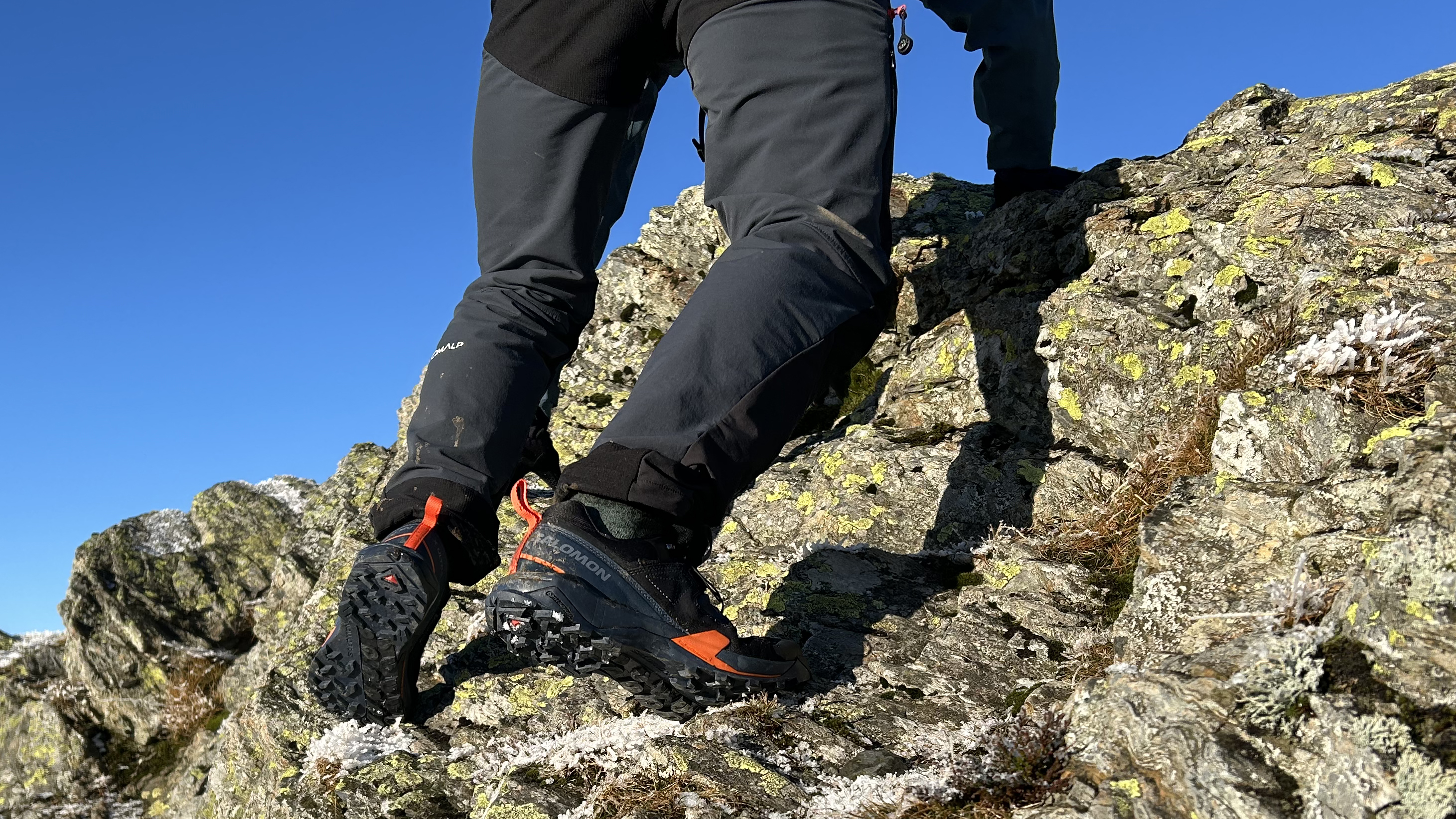
The upper deploys durable, nubuck leather and synthetics around the laces, all of which is enhanced by a Gore-Tex membrane. This makes the shoe nicely waterproof, though given its low cut, you’d want to pair it with gaiters if hiking in regions where boggy terrain is common, such as the Scottish Highlands.
Salomon’s classic Quicklace system brings everything in tight and there’s a little mesh lace pocket integrated into the tongue to keep everything tidy. To anyone unfamiliar with the patented Quicklace system, instead of traditional shoelaces it uses a cinch mechanism. You simply pull the lace-cord to the desired fit and slide the ‘S-Buckle’ down to secure it. When it’s time to loosen off, all you have to do is move the S-Buckle upwards. It makes taking the shoes on and off easy as pie. Beneath all of this, the tongue is gusseted to stop debris invading the inner sanctum.
High-stakes hiking
The choice of phrasing in Salomon’s description of the X Ultra Alpine made me smile: "high-stakes hiking". Does this mean I’d have to literally risk my neck to test these properly? Or perhaps I should wager a huge sum of money on reaching an objective. “I bet $1,000 that I can get to the summit. Any takers?”
I sought out scrambling terrain found in both the Lake District and Eryri (Snowdonia) National Parks for the test – hopefully Salomon will consider the stakes to have been high enough – as well as easier hikes closer to home in the Bannau Brycheiniog (Brecon Beacons) National Park. I encountered everything from dry rhyolite and amenable trails to committing icy slabs and boggy peat hags on my fall and winter adventures, really putting the Contagrip outsole through its paces. I was hugely impressed with its ability to hold on to the terrain throughout. This is a shoe that inspires confidence in the mountains.
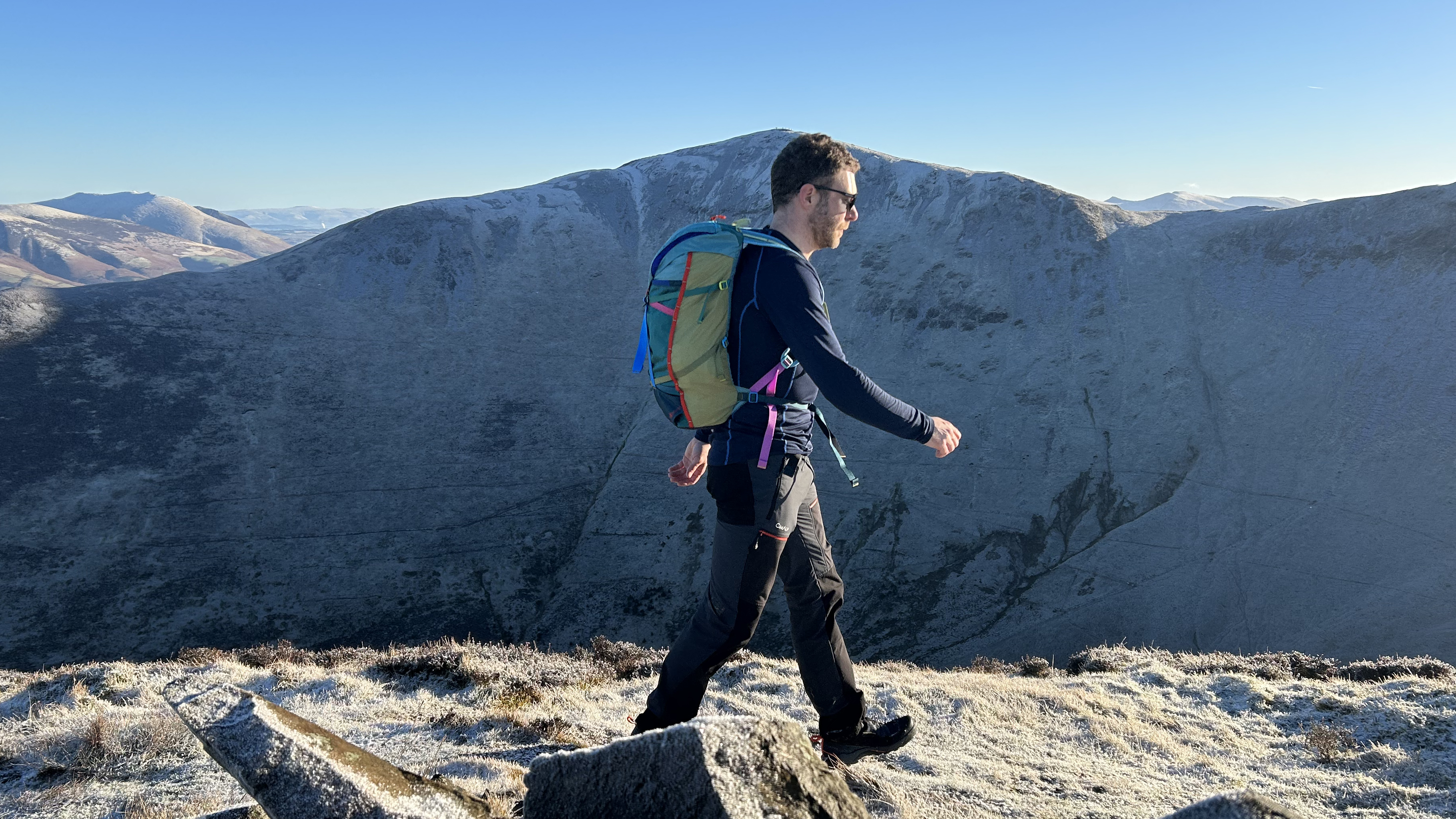
Nevertheless, there’s a limit to its ability in cold climes. The X Ultra is a hiking shoe, not a mountaineering boot. It’s not crampon compatible, so isn’t suited to more ambitious winter mountaineering or alpinism. Of course, winter hikers always have the option of attaching alternative traction devices, like microspikes or Yaktrax, but these are only safe to use of relatively gentle gradients.
I found the X Ultras to be comfortable and warm throughout the test period. They’re a little heavier than most hiking shoes and more breathable options exist for the summer months – so if you’re after something for easy, warm weather walks, these mountain goats are probably overkill. As ever, the Quicklace system is a joy to use, bringing the shoe nicely snug around the midfoot for a precise fit. Unlike with the X Ultra 04, my heel felt nicely locked in with the Alpine version too.
During descents, I’d treat the shoes to the occasional run, which they coped with fairly well. I’m not suggesting you run an ultra in them but they’re fine for a short burst when you want the walk out back to the car to pass a little quicker.
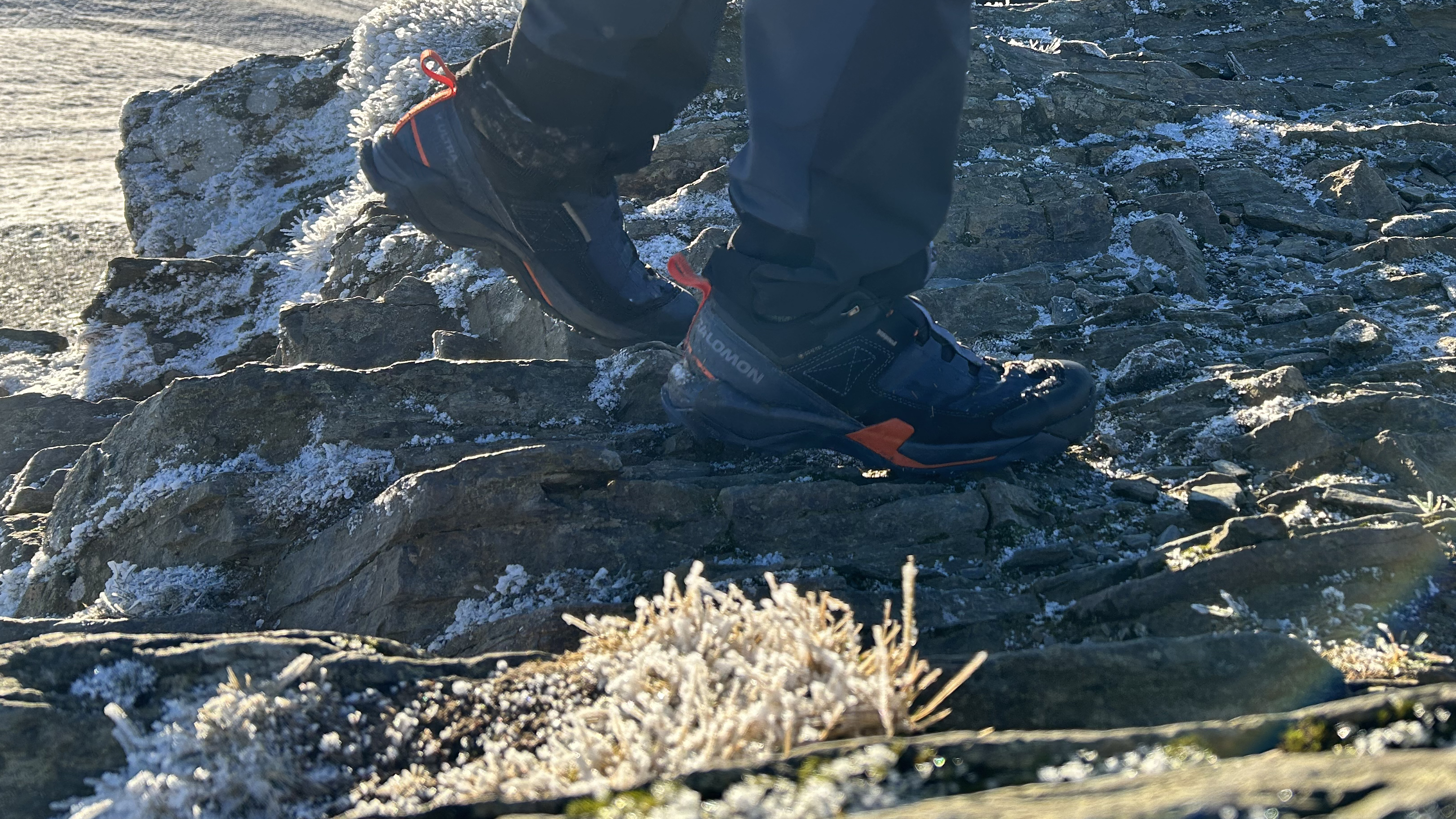
The Gore-Tex inner kept water ingress at bay up to a point, though the low-cut nature of these shoes means that water can – and will – get in over the top when covering really boggy ground. I found that this was an issue in the UK’s hills and mountains during the colder months. Admittedly, I wasn’t wearing gaiters, which would have helped. If you often hike on waterlogged terrain, the mid-cut versions will suit better.
What all this adds up to is that the X Ultra is a great choice for technical trails, scrambling missions, via ferrata adventures and hut-to-hut hikes – basically it’s great for ambitious hiking. It’s a cut above the average hiking shoe in terms of protection and traction, though it isn’t a substitute for a mountaineering boot in winter.







